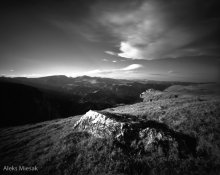aleksmiesak
Member
Hi there!
I am planning a backpacking trip into the high country in Montana this weekend. And I am considering bringing only my Zero Image 45 with me to push myself a little and step out of the comfort zone (plus it's way lighter then the Hasselblad). However, due to the bad fire year out here there is a lot of smoke and haze in the air. Does anyone use filters with their pinhole? I kind of feel like that defeats the purpose of "lensless" and might alter some of the feel of the inherent pinhole look. But it might be worth it to cut on the haze with either UV, CP or even yellow/orange and just tape it to the body or simply hold it. Also how do you compensate for the filter factor? I don't think UV would have any compensation but I just want to double check if the calcs are the same as with any other camera.
Anyway, any advice would be much appreciated. I plan on using one of the images from this trip as my contribution to the print exchange so one of you could really benefit from helping me out
Cheers!
Aleks
I am planning a backpacking trip into the high country in Montana this weekend. And I am considering bringing only my Zero Image 45 with me to push myself a little and step out of the comfort zone (plus it's way lighter then the Hasselblad). However, due to the bad fire year out here there is a lot of smoke and haze in the air. Does anyone use filters with their pinhole? I kind of feel like that defeats the purpose of "lensless" and might alter some of the feel of the inherent pinhole look. But it might be worth it to cut on the haze with either UV, CP or even yellow/orange and just tape it to the body or simply hold it. Also how do you compensate for the filter factor? I don't think UV would have any compensation but I just want to double check if the calcs are the same as with any other camera.
Anyway, any advice would be much appreciated. I plan on using one of the images from this trip as my contribution to the print exchange so one of you could really benefit from helping me out

Cheers!
Aleks





